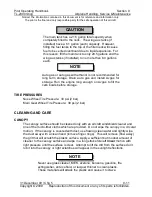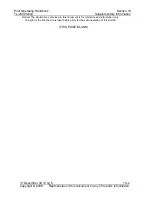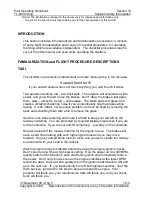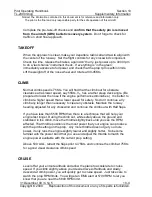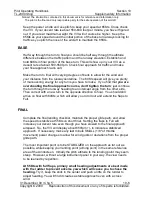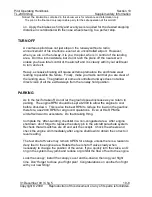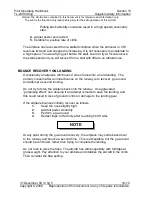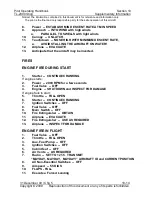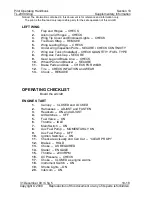
Pilot Operating Handbook
Section 10
TL-2000
Sting
Supplementary Information
Notice! The information contained in this document is for reference and information only.
The pilot is the final and only responsible party for the safe operation of this aircraft.
31 December 09 / Chg 5
10-13
Copyright © 2009 Reproduction of this document or any of its parts is forbidden.
FORCED LANDINGS
EMERGENCY LANDING WITHOUT ENGINE POWER
1.
Airspeed -- 70 KIAS
2.
Landing Zone -- DETERMINE and FLY TOWARDS
Engine Shutdown:
3.
Aux. Fuel Pump -- OFF
4.
Fuel Valve -- OFF
5.
Radio -- SET TO 121.5; TRANSMIT “MAYDAY, MAYDAY, MAYDAY!” and
AIRCRAFT ID with CURRENT POSITION
6.
Transponder -- SET TO 7700
7.
Landing Zone -- CIRCLE OVER (if possible)
BEFORE LANDING
8.
All Switches -- OFF
9.
Harnesses -- TIGHTEN
10.
Flaps -- FULL (on final)
11.
Touchdown -- PREFERABLY INTO WIND, NOSE HIGH
12.
Brakes -- APPLY AS REQUIRED
PRECAUTIONARY LANDING WITH ENGINE POWER
1.
Airspeed -- 70 KIAS
2.
Flaps -- HALF
3.
Harnesses -- TIGHTEN
4.
Selected Field -- EXECUTE LOW PASS (only if practical)
5.
Electrical Equipment -- OFF (EXCEPT IGNITIONS!)
6.
Flaps -- FULL (on final)
7.
Airspeed -- 55 KIAS
8.
Touchdown -- PREFERRABLY INTO WIND, NOSE HIGH
9.
Canopy -- UNLATCH
10.
Brakes -- APPLY AS REQUIRED
DITCHING – WATER FORCED LANDING
1.
The recommended procedure for water landings is to deploy the
parachute!
If not possible: Proceed as follows.
2.
Airspeed -- 55 KIAS
3.
Flaps -- FULL
4.
Radio -- SET TO 121.5; TRANSMIT “MAYDAY, MAYDAY, MAYDAY!” and
AIRCRAFT ID with CURRENT POSITION
5.
Transponder -- SET TO 7700
6.
Baggage -- SECURE
7.
Harnesses -- TIGHTEN

